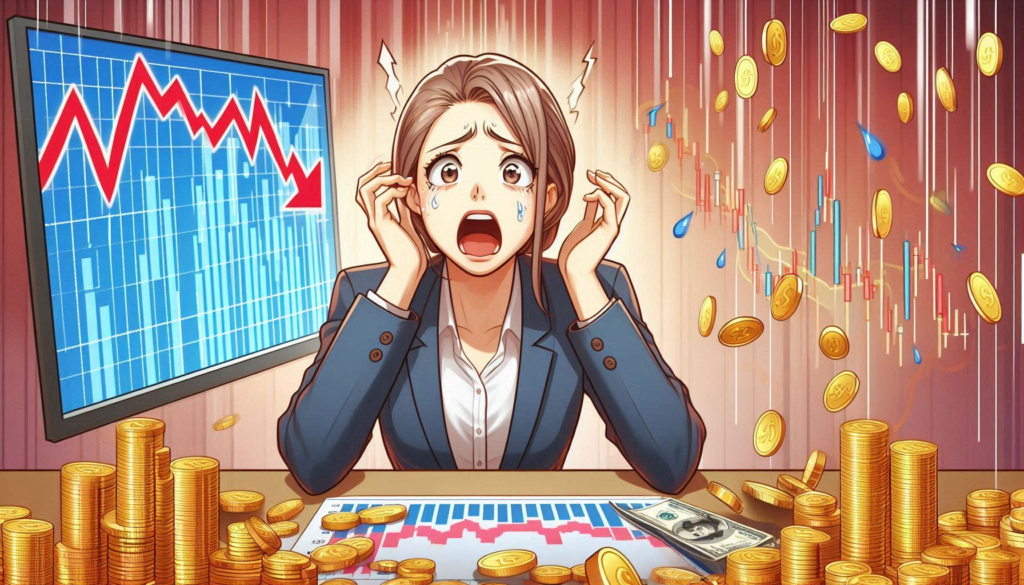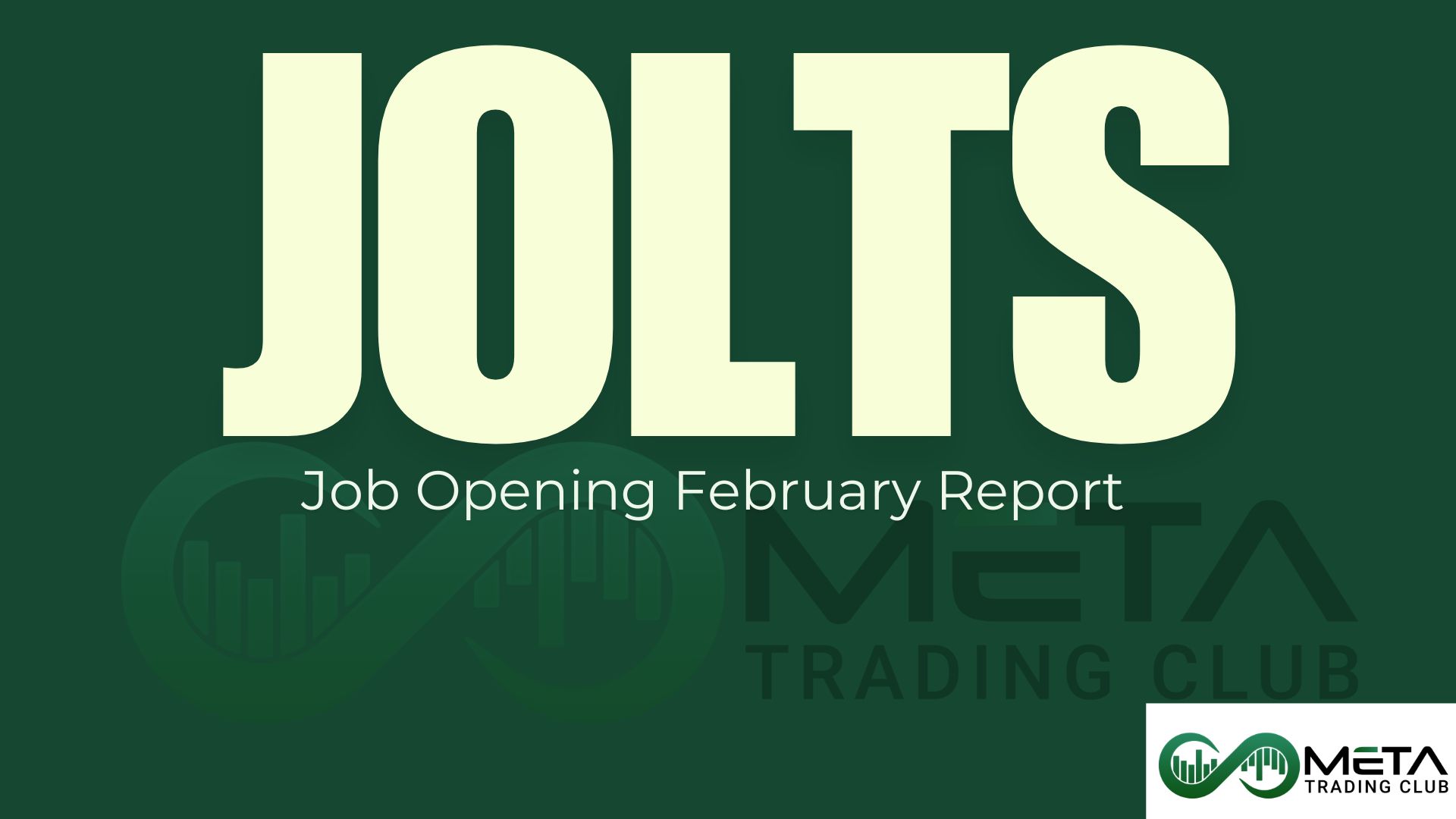The forex market, also known as the foreign exchange market, is like the global hub for currency trading, where currencies are traded against each other 24 hours a day, five days a week.
Unlike stock markets, which operate during specific hours, the forex market is open 24 hours a day, five days a week, allowing for continuous trading across different time zones.
The allure of the forex market is on the rise, increasingly capturing the attention of traders worldwide. This surge in interest is largely fueled by a growing number of success stories in the forex trading community.
As more individuals report significant gains, the market’s appeal escalates, drawing in a diverse crowd eager to partake in the potential for financial triumph.
But how do you join the ranks of these fortunate victors? What are the essential maneuvers you need to execute to ascend the ranks of successful Forex traders?
Fear not, for in this step by step guide, we will show you the trail of forex master traders. Step by step, we’ll navigate the roadmap to trading excellence, equipping you with the strategies that pave the way to success.
Table of Contents
How To Trade Forex?
Trading is easy and you should quit your job to start your successful trading business, Right? All those influencers with their beachside selfies and morning lattes have it all figured out, Right?
Just pop into the market, pick a few trades here and there, and watch the money roll in. Spoiler alert: that’s not how it works. Trading isn’t a casual walk in the park where you feed ducks and smell the roses.
Nope, it’s more like finding your way through a twisty maze. Picture this: you’re in a dark labyrinth, and lurking around every corner are these mythical creatures called Risk, Volatility, and Loss. They’re not friendly Minotaurs; they’re the challenges you’ll face on your trading journey.
Now, don’t let that scare you off! Sure, the market can seem like a dragon guarding a treasure hoard, but with the right knight in shining armor (aka guidance), you can embark on an epic quest.
This isn’t just a journey; it’s your adventure of a lifetime. With each trade, you’ll slay dragons, discover new lands, and maybe, just maybe, find your financial Holy Grail. So buckle up, because with our map and compass, the world of trading is yours to conquer!
Step 1: Lay the groundwork
In the grand webwork of skills, mastering the basics is the golden thread that holds everything together, and Forex trading is no exception to this timeless truth.
It’s like learning to play an instrument; you start with scales before you can play a symphony. In Forex, understanding the structure, the players, the jargon, and the market movers is your do-re-mi. It’s the foundation upon which you’ll build towering trades and craft strategies that dance to the rhythm of the markets.
Here’s the list absolute basics you need to know first:
- Forex Market Framework
- Forex Market Players
- Key Terminology
- Key Concepts(e.g. Supply & Demand)
We’ve gone through all of these in our last article. If you are an absolute beginner we recommend reading our forex beginners guide before moving forward to next steps.
Understanding these fundamental concepts paves the way for tackling more complex topics, providing you with steady guidance on your forex trading odyssey and enhancing the enjoyment of the experience.

Step 2: Choose Your Trade Contract
When it comes to trading in the forex market, there are three primary types of contracts you can use: Contracts for Difference (CFDs), futures, and options. Each of these instruments offers unique ways to speculate on currency movements, allowing you to choose the one that best fits your trading style and goals.
Contracts for Difference: CFDs are popular among forex traders because they are straightforward and flexible. With CFDs, you’re essentially entering into a contract with your broker to exchange the difference in the price of a currency pair from when the contract is opened to when it is closed.
The simplicity of CFDs makes them a favorite for beginners, as they allow you to profit from both rising and falling markets without actually owning the underlying asset. However, it’s important to be aware of the risks associated with leverage, as it can time fold both gains and losses.
Futures: Futures contracts, on the other hand, are standardized agreements to buy or sell a specific amount of currency at a predetermined price on a set date in the future. These are traded on exchanges and are often used by large institutions and professional traders.
Futures provide a high level of transparency and regulation, which can be reassuring. However, the fixed contract sizes and expiration dates can be less flexible compared to CFDs, making futures a bit more complex for newcomers.
Options: Options contracts give you, the option buyer, the right but not the obligation to buy or sell a currency at a specific price before a certain date. This flexibility allows you to hedge your positions and manage risk more effectively.
Options can be a powerful tool because they provide the potential for significant returns while limiting your risk to the premium paid for the option. However, the complexity of options strategies and pricing can be daunting for beginners.

Overall, CFDs are more beginner friendly and more accessible for those who are just starting out. If you are not a seasoned trader, we recommend you to steer clear of futures and options for the time being to avoid confusion on your trading journey.
Step 3: Choose a Proper Broker
Choosing the right broker is like picking the perfect travel companion for a long journey; it can make all the difference in your forex trading adventure. A good broker ensures that your trading experience is smooth, secure, and supported by reliable resources.
They provide a stable platform, excellent customer service, and valuable educational tools, all of which are crucial for your success. Just like you wouldn’t want a travel buddy who constantly loses your luggage, you don’t want a broker who isn’t trustworthy or responsive.
So, take your time, do your homework, and choose wisely. After all, your financial future might just depend on it! But how one must pick the proper broker? Well, you should consider several key factors before choosing your companion:
- Broker Regulation:
The first thing you need to check is whether the broker is regulated by a reputable regulatory body. Regulatory oversight ensures that the broker operates within the legal framework and adheres to strict standards, which protects you from potential fraud and malpractice. Some of the most reliable regulatory bodies include: - The Financial Conduct Authority (FCA) in the UK
- The Australian Securities and Investments Commission (ASIC)
- The Commodity Futures Trading Commission (CFTC) in the USA
- The Cyprus Securities and Exchange Commission (CySEC)
A broker regulated by these authorities is generally considered trustworthy.
- Tradable Assets:
Brokers vary in the range of assets they support. Some brokers focus exclusively on forex, while others offer a wider variety of markets including commodities, stocks, and even cryptocurrencies, the black sheep of the financial family. If you plan to diversify your trading, a broker that supports multiple asset classes might be more suitable. - Broker Platform:
The Broker platform itself needs to be user-friendly, reliable, and accessible on various devices. Look for platforms that offer demo accounts so you can practice trading without risking real money.
It must also support popular Trading Softwares like MetaTrader 4 (MT4) or MetaTrader 5 (MT5). Apart from these, it is preferable to choose a broker with minimal commissions or fees. - Trading Resources:
Good brokers provide educational materials to help you improve your trading skills. These resources might include tutorials, webinars, news coverage, economic events calendars, and risk management tools. Having access to these resources can be invaluable, especially when you’re just starting out. - Payment Service:
The process of depositing and withdrawing capital should be fast, convenient, and hassle-free. Check what payment methods the broker supports and ensure that there are no hidden fees. Fast and reliable payment services can make your trading experience much smoother. - Customer Service:
Excellent customer service is crucial. Look for brokers that offer 24/7 customer support and have a positive reputation on social media. Responsive and helpful customer service can make a big difference when you encounter issues or have questions about your trading account.
If you’ve analyzed multiple brokers and found one that meets your preferred characteristics, congratulations, you’ve found the one!

Step 4: Open a trading account
Once you’ve chosen a broker, the next step is to open a trading account. This process is straightforward, but it’s important to understand why brokers offer multiple types of accounts and how to choose the right one for your needs. Brokers typically offer a range of trading accounts to cater to the diverse needs and preferences of traders.
- Demo Accounts: These are perfect for beginners as they allow you to practice trading with virtual money, gaining experience without any financial risk.
- Standard Accounts: These are the most common type of live trading accounts, offering access to a wide range of assets with typical spreads and leverage options.
- Mini and Micro Accounts: Designed for those who want to start trading with smaller amounts of capital, these accounts allow you to trade smaller lot sizes.
- ECN Accounts: These accounts provide direct access to the interbank market, usually with tighter spreads and lower commissions, suitable for more experienced traders.
Each account type offers different features such as varying levels of leverage, minimum deposit requirements, and access to trading tools. By providing multiple account types, brokers can accommodate both novice traders who are just starting out and seasoned traders who require advanced features.
Step 5: Prepare a Trading Plan
Trading forex without a plan is like going on a road trip without a map. Sure, you might stumble upon some scenic routes, but chances are you’ll end up lost in the middle of nowhere.
The difference between the 95% of traders who lose and the 5% who win often comes down to having a solid trading plan. So, let’s ensure you’re part of the winning minority by setting up a proper trading plan. Here are the crucial elements:
- Trading Strategy: Your trading strategy outlines your approach to the market, including the types of trades you’ll make and the indicators you’ll use. Whether it’s day trading, swing trading, or scalping, having a clear strategy helps you stay disciplined and avoid emotional decision-making.
- Trading Goals: Setting clear, realistic goals is essential. Define what you aim to achieve, whether it’s a specific monthly return, a certain number of successful trades, or simply gaining experience. Goals give you a target to aim for and help keep your trading focused and purposeful.
- Risk Management: Risk management is arguably the most critical part of your trading plan. This includes setting stop-loss orders, determining your risk-to-reward ratio, and deciding how much of your capital you’re willing to risk on each trade. Good risk management protects your capital and helps you survive losing streaks.
- Journaling: Keeping a detailed trading log allows you to track your performance, analyze your trades, and learn from your mistakes. Record your entries, exits, the reasons behind your trades, and the outcomes. Over time, this journal becomes a valuable tool for improving your trading skills.
- Trading Rules: establish a set of rules to guide your trading. These might include the times you’ll trade, the markets you’ll focus on, and the conditions that must be met before entering a trade. Rules help you maintain consistency and avoid impulsive decisions.
- Trading Psychology: Understanding and managing your emotions is crucial. Fear, greed, and overconfidence can all lead to poor trading decisions. Develop strategies to stay calm and disciplined, such as taking regular breaks, meditating, or setting strict trading hours.
Without a plan, you’re more likely to make impulsive decisions, overtrade, and take on unnecessary risks, all of which can quickly deplete your trading account.
By sticking to a well-thought-out plan, you increase your chances of staying disciplined, managing your risk effectively, and achieving your trading goals. So, plan your trade and trade your plan, because wandering aimlessly is best left for adventurous road trips, not your trading journey!

Step 6: Choose a Currency Pair
Selecting the right currency pair to trade is a fundamental aspect of forex trading. The forex market offers a plethora of currency pairs, but not all are created equal. It is often suggested by traders to pick currencies with high liquidity and trading volume, but why?
- Tighter Spreads: High liquidity means that there are a lot of buyers and sellers in the market, which typically results in tighter spreads, the difference between the bid and ask price. Tighter spreads reduce the cost of trading, allowing you to maximize your profits.
- Lower Volatility: Currency pairs with high trading volumes, such as the majors (EUR/USD, USD/JPY, GBP/USD, and USD/CHF), tend to be more stable and less prone to massive price swings. This lower volatility makes it easier to predict price movements and manage risk effectively.
- Faster Execution: High liquidity ensures that your trades can be executed quickly and at your desired price. This is crucial in a fast-moving market where delays in execution can result in slippage and unexpected losses.
- Reliable Technical Analysis: The high trading volume of major currency pairs leads to more reliable and accurate technical analysis. Patterns, indicators, and trends are more dependable when applied to pairs with substantial liquidity because they reflect broader market consensus rather than the actions of a few large players.
- Consistent Trading Opportunities: Major currency pairs are actively traded around the clock, providing consistent trading opportunities. Whether you’re trading during the Asian, European, or North American sessions, you’ll find activity and liquidity in these pairs.
Picking the right currency pair is not just about preference but about aligning with market dynamics that enhance your trading strategy.
High-liquidity pairs offer cost efficiency, predictable price movements, and reliable analysis, all of which contribute to a more favorable trading environment. For beginner traders, focusing on these major pairs can simplify the learning process and increase the likelihood of success.

Step 7: Pre-Trade Analysis
Before placing any trades, it’s essential to conduct a thorough pre-trade analysis to make better informed decisions. This involves three primary types of analysis: Fundamental Analysis, Technical Analysis, and Sentiment Analysis.
Fundamental Analysis
Fundamental analysis involves evaluating economic, financial, and geopolitical factors that can affect currency prices. Traders use this type of analysis to understand the underlying economic conditions and make long-term predictions about currency movements. Key instruments used in fundamental analysis include:
- Economic Indicators: GDP, unemployment rates, inflation reports.
- Central Bank Policies: Interest rate decisions, monetary policy statements.
- News Events: Political events, economic news, and global developments.
Technical Analysis
Technical analysis focuses on historical price data and trading volumes to forecast future price movements. This type of analysis is particularly useful for identifying trends and market patterns. Some key instruments used in technical analysis include:
- Charts and Graphs: Candlestick charts, line charts, bar charts, etc.
- Technical Indicators: Moving averages, RSI (Relative Strength Index), MACD (Moving Average Convergence Divergence), etc.
- Chart Patterns: Head and shoulders, double tops and bottoms, triangles, etc.
Sentiment Analysis
Sentiment analysis gauges the overall mood of traders and market participants. It helps traders understand whether the market is bullish or bearish, which can influence their trading decisions. Key instruments used in sentiment analysis include:
- Commitment of Traders (COT) Reports: Data from the Commodity Futures Trading Commission (CFTC) showing the positions of large traders.
- Surveys and Polls: Market sentiment surveys from financial institutions and analysts.
- Social Media and News: Monitoring social media platforms, news headlines, and financial forums.
We introduced these types of analysis in our last article and will dive deeper into each in future guides. Stay tuned for our upcoming detailed guides on fundamental, technical, and sentiment analysis to enhance your trading ability.

Step 8: Long or Short?
In forex trading, the decision on whether to go long or go short, might seem like a bet at first, but as you gain more knowledge and experience, more and more it seems like an educated guess! Let’s define them first shall we?
Going Long: When you go long on a currency pair, you are buying the base currency (the first currency in the pair) and selling the quote currency (the second currency). You anticipate that the value of the base currency will rise relative to the quote currency. For example, if you go long on EUR/USD, you are buying euros and selling dollars, expecting the euro to increase in value against the dollar.
Going Short: When you go short on a currency pair, you are selling the base currency and buying the quote currency. You anticipate that the value of the base currency will fall relative to the quote currency. For example, if you go short on GBP/USD, you are selling pounds and buying dollars, expecting the pound to decrease in value against the dollar.
Making the Decision
As discussed in the last section, your decision should be rooted in comprehensive pre-trade analysis. If economic indicators suggest a strong economy and potential interest rate hikes, you might consider going long. Conversely, negative economic reports could prompt you to go short.
On the technical front, If technical indicators and chart patterns signal an upward trend, you might decide to go long. Other way around, signs of a downward trend could lead you to go short. You should also consider the sentiment around the market, whether people are bullish or bearish.
Step 9: Risk Management
Effective risk management is the backbone of successful trading. It’s all about protecting your capital and ensuring that you can survive the ups and downs of the market. Without proper risk management, even the best trading strategies can lead to significant losses.
Risk management involves identifying, assessing, and controlling risks to minimize the impact of losses. Key components include setting stop-loss orders, determining the size of each trade, and managing your overall exposure to the market. The goal is to ensure that no single trade or series of trades can significantly harm your trading account.
Risk management might sound like a buzzkill, especially when compared to the wild charts of the crypto market, where the motto seems to be “to the moon, or bust!”
As a beginner, it’s essential to gain the necessary experience and market exposure without risking real money. This is where paper trading comes in. Paper trading allows you to practice your trading strategies and risk management techniques using virtual money. It’s an excellent way to learn the ropes and build confidence before jumping onto live trading.
There are numerous approaches to risk management, and it’s crucial to find one that fits your trading style and goals. One key aspect is calculating the risk-to-reward ratio for each trade you consider. The risk-to-reward ratio compares the potential profit of a trade to the potential loss.
We’ll dive deeper into various risk management strategies in future articles. For now, remember that protecting your capital is just as important as growing it. Stay cautious, stick to your plan, and always calculate the risk before making a move.

Step 10: Monitor and close
Monitoring an open trading position is crucial for managing your trades effectively. This can be done easily by checking your PC screen or by using your mobile phone, ensuring you can keep an eye on your trades from anywhere.
When you’re high on profits and have reached your trading goal, it’s best to close the trade and prevent falling into the trap of greed. Remember, pigs get fat, but hogs get slaughtered! Secure your gains and stick to your plan.
On the flip side, if the trade isn’t going your way and you start seeing losses, it’s time to cut your losses and move on. As your trading plan dictates, it’s better to exit a losing position before it becomes a financial blackhole.
Sometimes you have to accept that the market isn’t in your favor and stick to your predefined stop-loss levels. It’s all part of being a disciplined trader.
Congrats!
Congratulations! You’ve made it through all ten essential steps necessary for becoming a successful forex trader. We’ve covered everything from understanding the forex market to choosing the right broker and currency pair.
We discussed the initial analysis of price movements, the importance of having a solid trading plan, and the crucial aspects of risk management. We even delved into the finer points of monitoring your open positions and knowing when to close them, ensuring you stay disciplined and focused.
Now that you’ve completed these foundational steps, you’re well-prepared for more advanced trading education. Your journey is just beginning, and there’s so much more to learn and master.
To help you take the next step, we are excited to introduce our trading program, the Meta Trading Club Incubator. This program is designed to provide you with the in-depth education and support you need to find your inner trader and achieve your trading goals. Join us to gain access to advanced trading strategies, personalized mentoring, and a community of like-minded traders committed to success.
Well done on finishing the first ten steps, and welcome to the exciting world of forex trading. In Meta Trading Club, we look forward to helping you advance your skills and succeed in the trading game.
FAQ
- How to trade forex as a beginner?
Start by learning the basics of forex trading, choosing a regulated broker, and opening a demo account. Develop a solid trading plan and practice with virtual funds before transitioning to live trading. Continuous education and practice are key to becoming a successful forex trader. - How do forex traders make money?
Forex traders make money by trading currency pairs using Contracts for Difference (CFDs). They profit from the changes in exchange rates. By accurately predicting these fluctuations, traders can buy low and sell high, or sell high and buy low, to capture gains through CFD positions. - How much money do I need to start forex?
You can start trading forex with as little as $100, but it’s recommended to begin with at least $500 to $1,000 for better risk management and flexibility. This amount allows you to absorb losses and learn without the pressure of immediate financial strain. The minimum amount also depends on your broker. - How long does it take to learn forex?
Learning forex can take several months to a few years, depending on your dedication, the time you invest, and the complexity of the strategies you aim to master. Continuous learning and practice are essential for developing and honing your trading skills. - Can I learn forex on my own?
Yes, you can learn forex on your own through online resources, tutorials, books, and practice. However, joining a structured program or community can accelerate your learning process by providing guidance, mentorship, and access to valuable insights and strategies.









